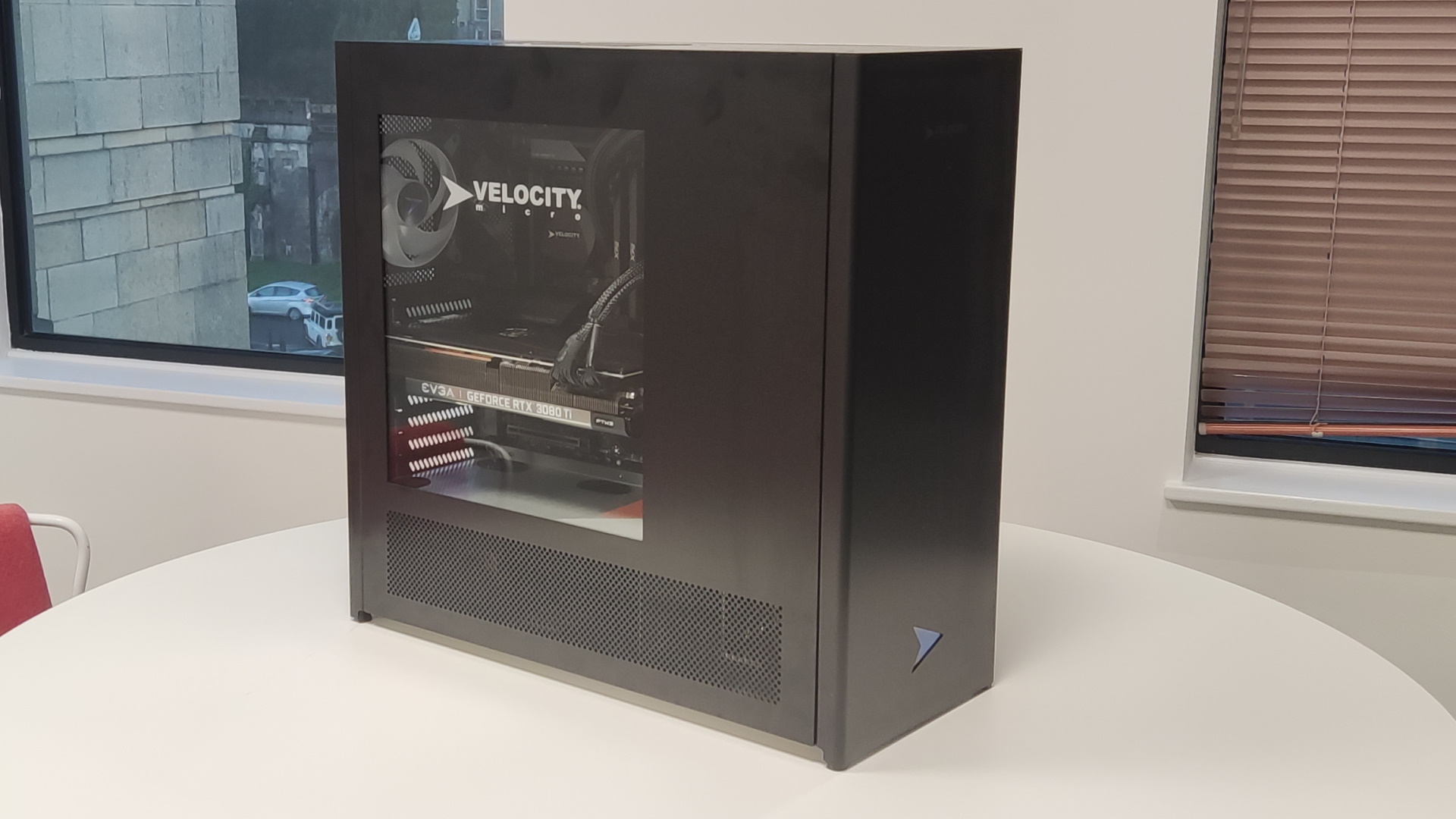Our Verdict
The healthy CPU and GPU overclocks make for some impressive benchmark figures, and this PC will relish gaming at 4K, but the top-end gear comes at a serious cost.
For
- Stunning OC CPU performance
- Great 4K gaming frame rates
- Quiet running
Against
- CPU can run hot
- Prohibitively expensive
PC Gamer's got your back
Intel Alder Lake is here and set to transform the PC gaming landscape. System builders are keen to show off what they can do with Intel's new gaming powerhouse too, particularly when paired with Nvidia's high-end graphics cards. We've already looked at new systems from Corsair and HP using the same Core i9 12900K you'll find inside this machine, but Velocity Micro has taken a different approach to those two systems, shipping this Raptor Z55 pre-baked with a 5.1GHz all-core overclock (that's the P-cores, the E-cores are clocked at 4GHz). That's an impressive feat, as you'll see shortly.
It isn't cheap though. The ticket price for this machine? A cool $4,999.
This is comparable to the $4,700 HP Omen 45L and $4,999 Corsair One i300. These are high-end systems, make no mistake, and system builders are still figuring out the best way to show off what Intel's Alder Lake is capable of while still making money. You can configure these builds to your budget and needs, so don't be too put off by that price tag—think of it as a flagship demo of the builder's skills.
The other thing to bear in mind is the ongoing silicon crisis, making it tricky to assign a reasonable cost to any system using a high-end graphics card. I mean, just how much should the RTX 3080 Ti in this system cost? The launch price is a known entity, but you absolutely can't get the EVGA GeForce RTX 3080 Ti FTW3 edition in this machine for $1,200 right now. Nowhere near, in fact. It's hard to avoid the current graphics card inflation basically. There's a similar issue with DDR5 RAM right now as well, particularly when it's slightly speedier than the norm.
So, forget the cost a moment, and instead revel in what Velocity Micro has created with this system. This is a machine intended for the future. It's overclocked out of the box, brilliantly cooled, has a surprisingly understated aesthetic, and spacious enough for expansion later on. It's a 4K monster you can buy today and enjoy for years to come, basically.
CPU: Intel Core i9 12900K @ 5.1GHz
GPU: EVGA GeForce RTX 3080 Ti FTW3
RAM: 32GB (2x 16GB) DDR5-5200
Motherboard: Gigabyte Z690 Aorus Master
Storage: 2TB Samsung 980 Pro NVMe SSD
Front I/O: 1x 3.5mm audio, 2x USB 3.2 Gen 1, 1x USB 3.2 Gen 2 Type-C
Rear I/O: 4x USB 3.2 Gen 1, 5x USB 3.2 Gen 2, 2x USB 3.2 Gen 2 Type-C, 10GbE LAN, HD Audio, 3x DisplayPort, 1x HDMI
PSU: EVGA 850W SuperNOVA
OS: Windows 11 Home
Dimensions: 20.25 x 20.5 x 8.25 inches
Weight: 30lbs
Warranty: 1 Year
Price: $4,999
The full specification features plenty of recognizable brands, from the aforementioned EVGA graphics card to the 2TB Samsung 980 Pro PCIe 4.0 NVMe SSD. The case and the CPU cooler are both Velocity Micro branded, with the former being a custom-built aluminum chassis with plenty of space for cooling and a side window so you can gaze upon all your expensive hardware.
The Raptor Z55 comes with two fans in the roof and an exhaust at the back, as well as the triple-fan radiator for the CPU cooler. This rad is mounted side on pulling air through a grill on the right-hand side of the case, although that side window doesn't extend forward enough to really show this off, which is a shame, because it's mesmerizing when you pop the side off, which is a tool-free affair.
Velocity Micro has clearly spent time and effort getting the acoustics of this machine right, and even when running at full bore, it's never really loud. That triple-fan CPU cooler means that it's quick to return to normal temperatures too, which is a good thing because the CPU can run really hot when pushed.
In testing, the 5.1GHz overclock produces some seriously impressive results, but it can also reach 111°C when doing so. That's seriously hot, but you honestly wouldn't know it from the sound of the rig running. It's worth noting that it doesn't reach that temperature when gaming, topping out at 100°C, and overall the average is much lower at around 60°C, but still, it's surprising to see it get so hot.
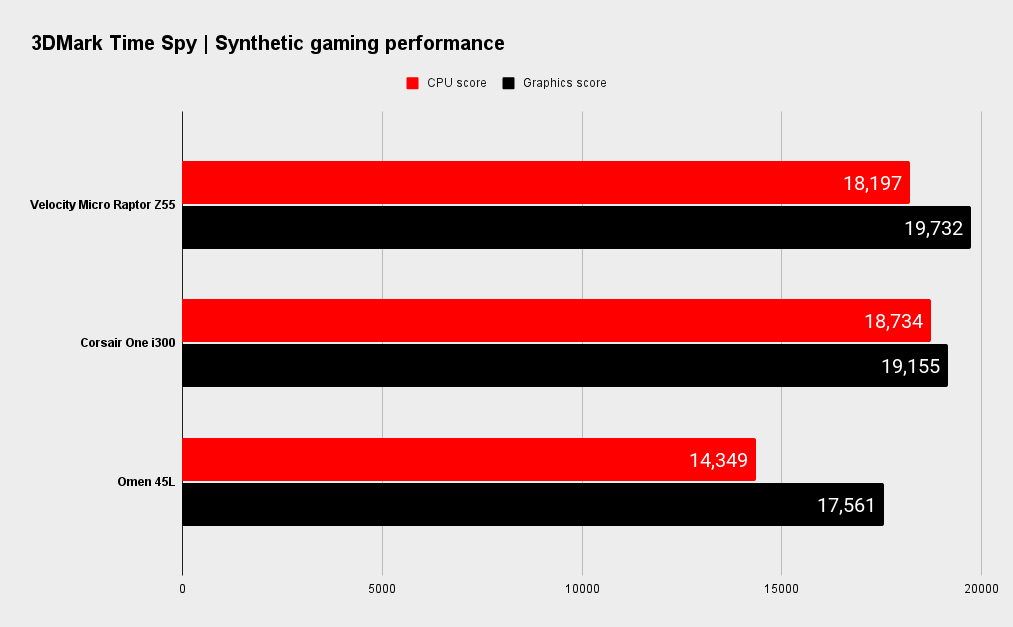
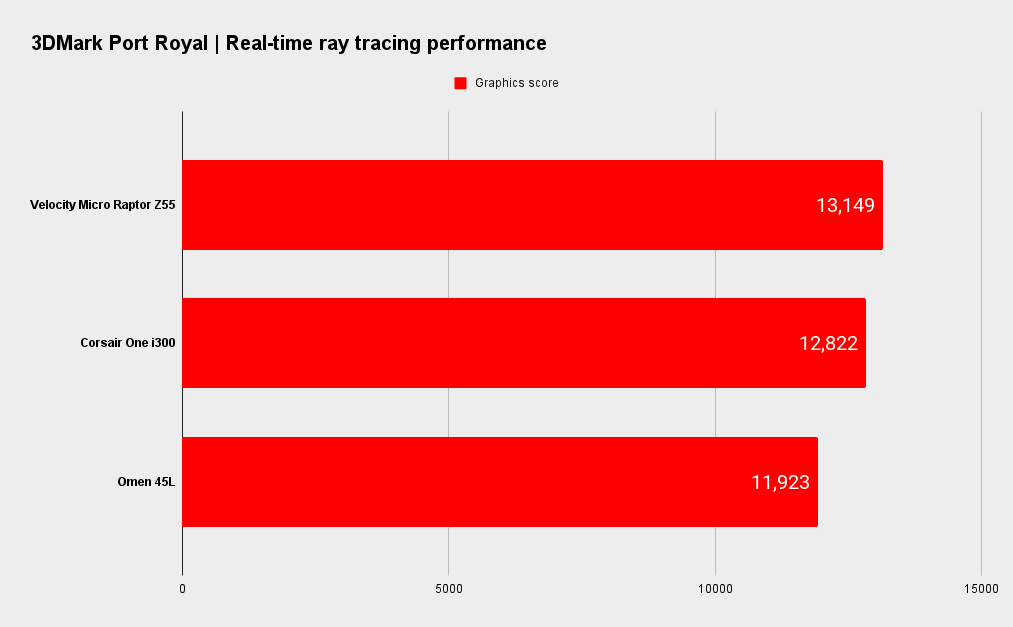
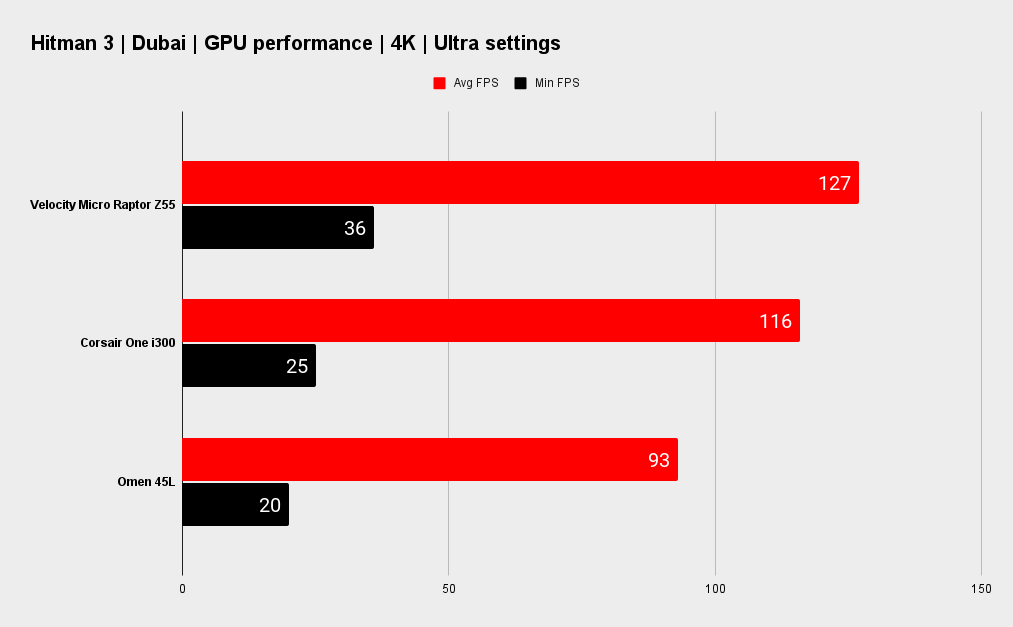
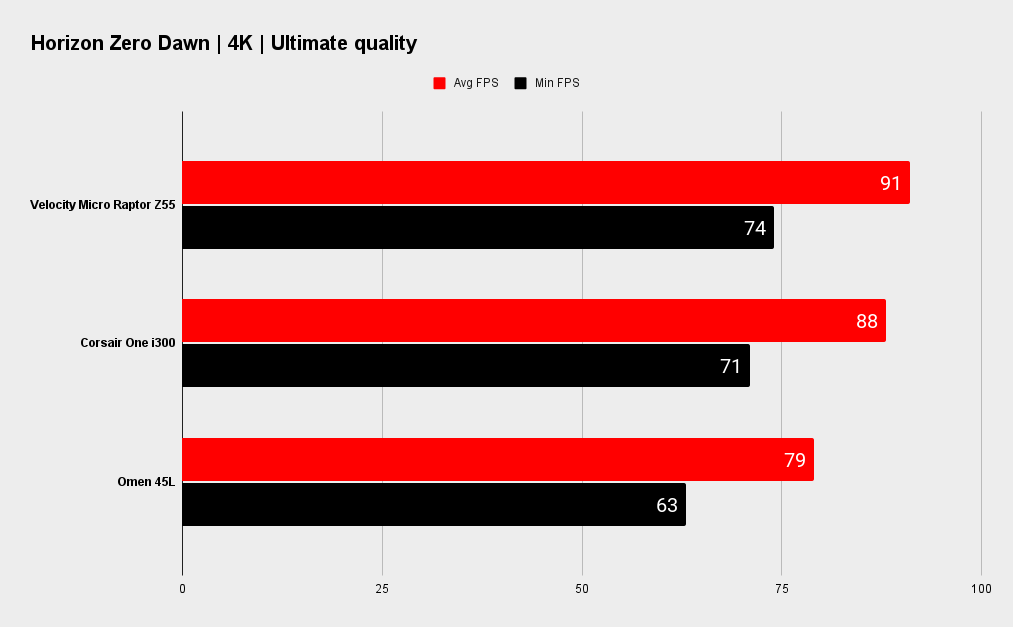
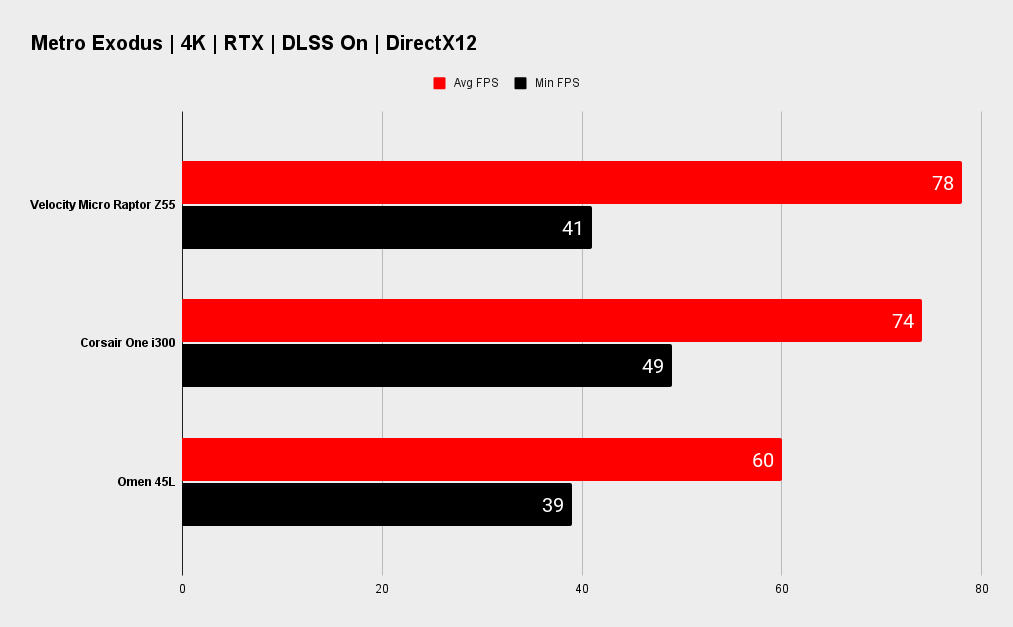
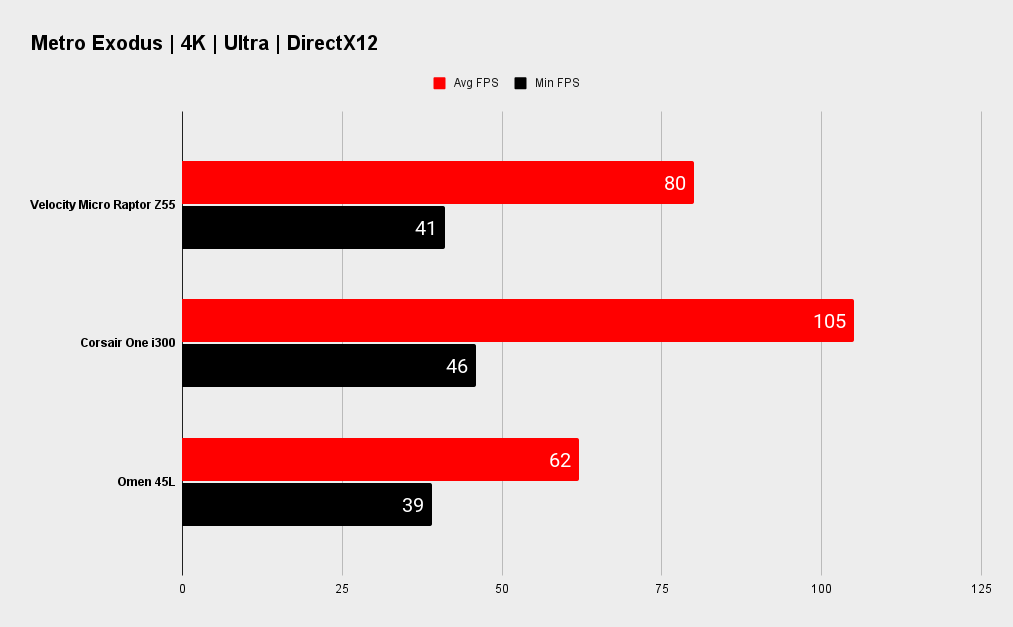
In case you haven't guessed it already, this is a seriously fast machine. That CPU overclock coupled with the overclocked RTX 3080 Ti (it boosts to 1,800MHz as opposed to the 1,670MHz of the standard RTX 3080 Ti), make for a particularly potent pairing. You're not going to have any problems running your games on this machine, even at 4K with all the settings ramped up as hard as they can go.
Horizon Zero Dawn managed a phenomenal 91fps at 4K, while Metro Exodus running with RTX ray tracing on hit an impressive 78fps. Hitman 3's Dubai level saw an average frame rate of 127fps. All three of these scores top the benchmark charts and are faster than the HP Omen and Corsair One machines, which is impressive given the former has an RTX 3090. It isn't a clean sweep though, with the non-RTX runs of Metro Exodus being slower than the Corsair One.
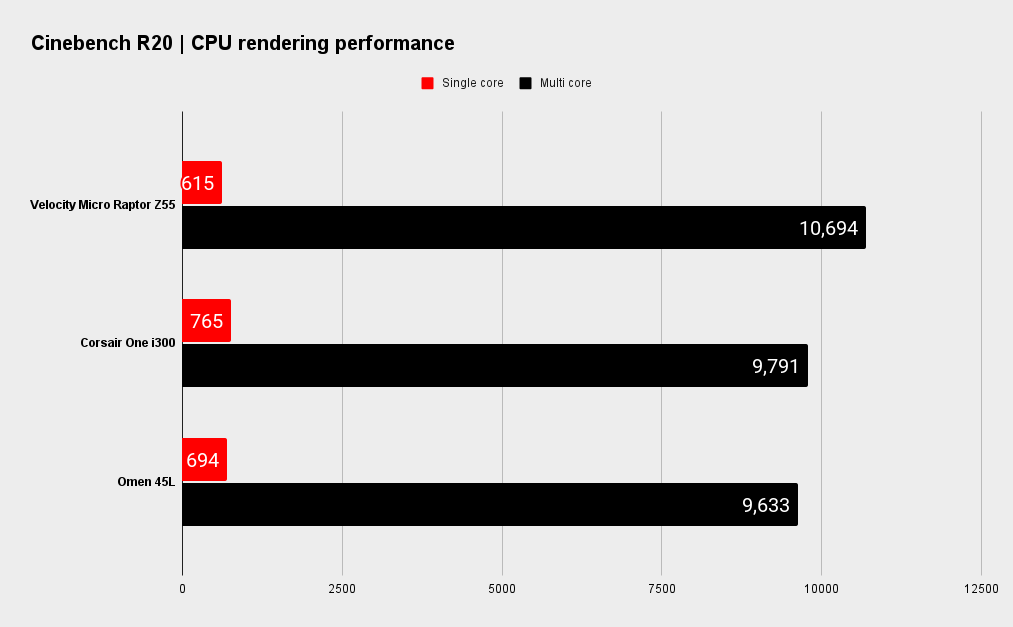
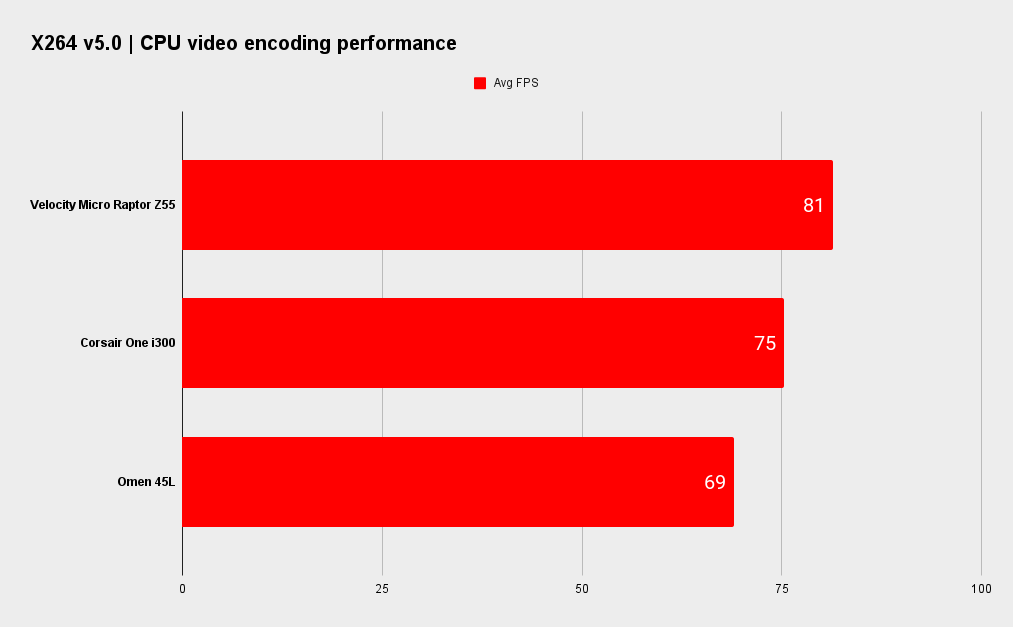
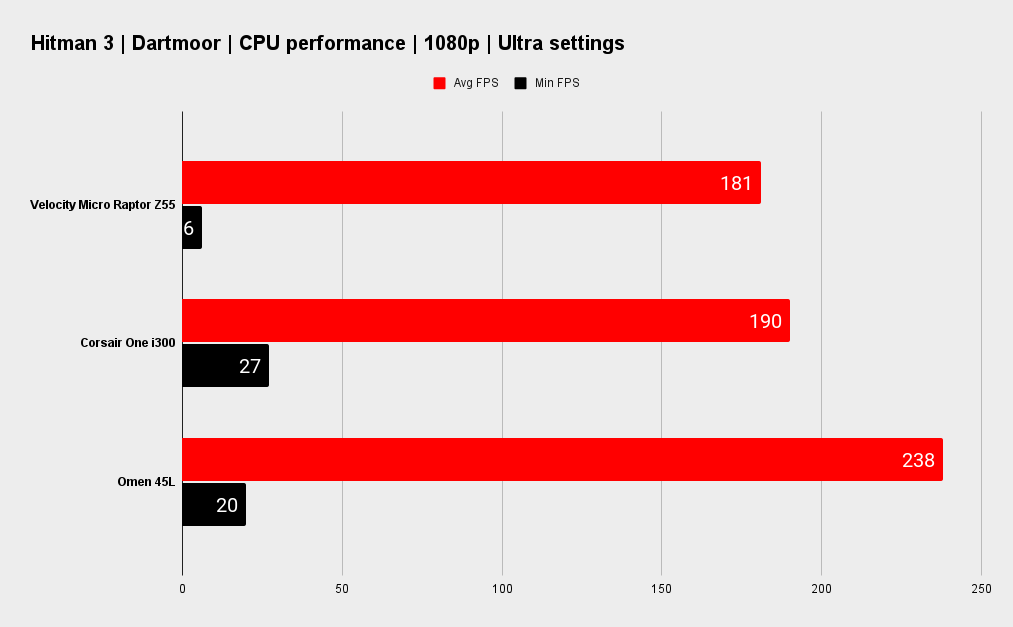
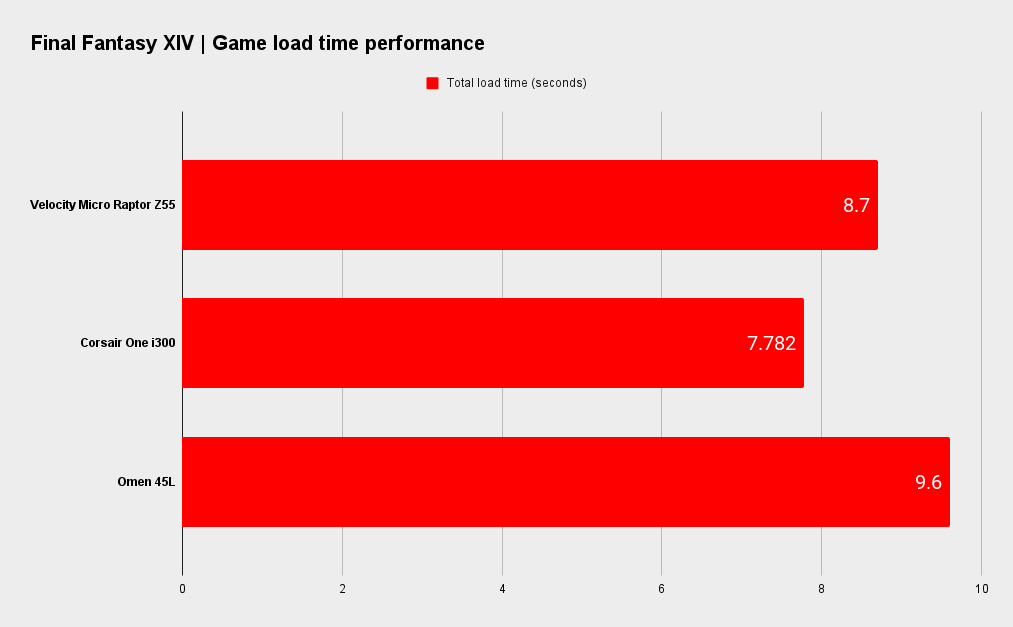
If you're looking at this machine for some more serious number crunching alongside its gaming prowess, then the good news is that the combo of 32GB of DDR5-5200 and that 5.1GHz overclock equates to some phenomenal throughput. Cinebench R20 managed to break through the 10K barrier for the first time, and the X264 benchmark recorded an impressive 81fps too.
The CPU test from Hitman 3 lagged the other two machines though, as did the single-core performance from Cinebench R20, which suggests the all-core overclock means single-core performance doesn't quite hit the 5.2GHz heights of the chip managing its own clocks. Still, single-core performance is rarely called upon these days.
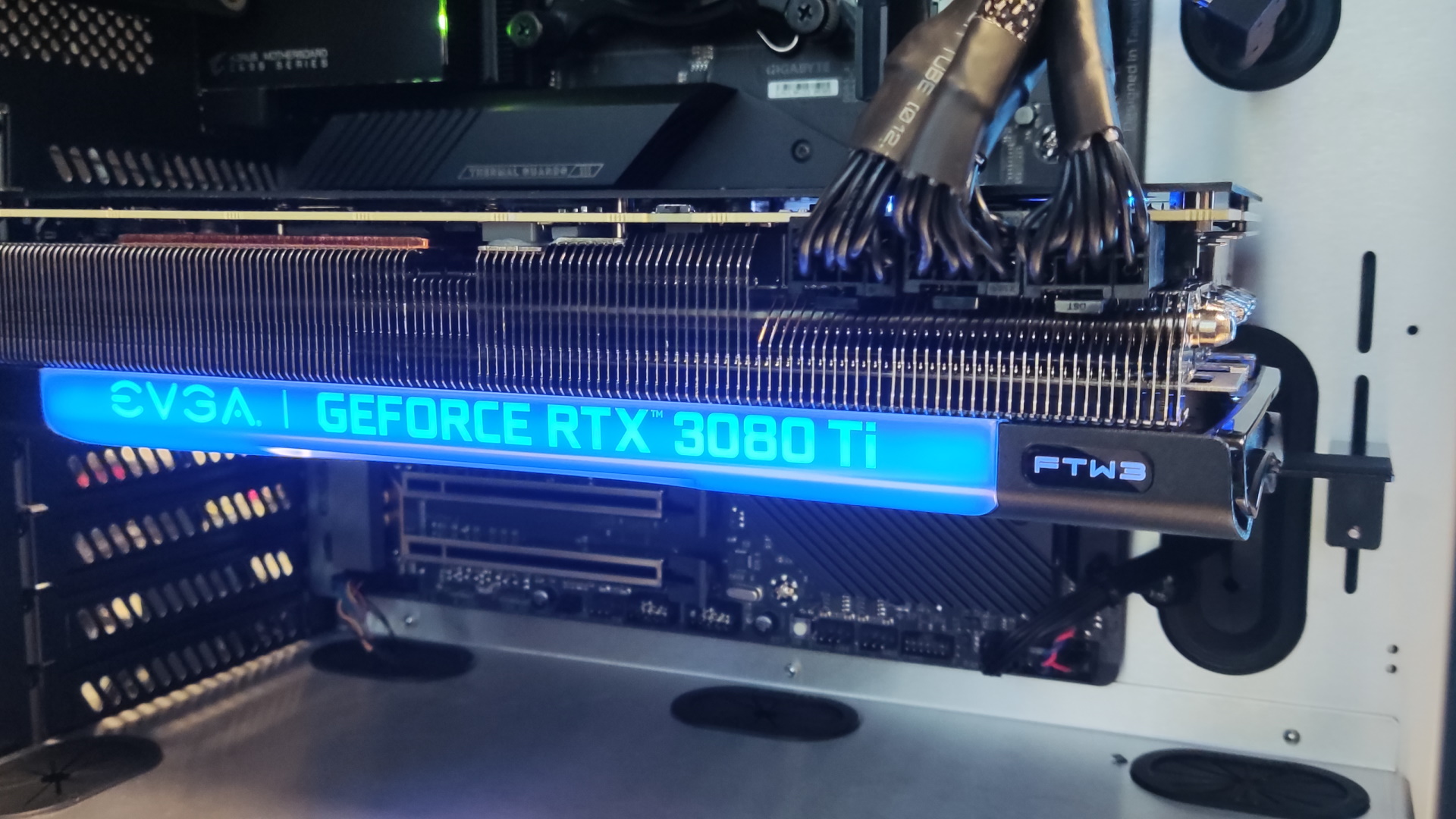
If there is a problem with this Raptor Z55, it's that, if anything, it's a bit too reserved. It's an awesome machine, have no doubt, but that's mainly on the inside. And while that might be enough for plenty of buyers, it lacks that 'something special' to really make it stand out from the growing crowd of high-end machines.
After reviewing the Corsair One i300 so recently, it's that compact PC that stands out for me. So, even though it trails this machine in plenty of the benchmarks (albeit by only a few percentage points at most), it's the system I'd recommend for the money. Looks are important after all it would seem.
Not that this machine is anyway lacking in the performance stakes. And in fact, the Velocity Micro machine is going to be a lot easier to upgrade over the years than the Corsair is, but when you're looking at dropping $5,000 on a high-end PC pure logic isn't always going to be enough. What is clear from the Raptor Z55 is that Velocity Micro knows how to build gaming PCs, and the level of detail here is phenomenal.
The healthy CPU and GPU overclocks make for some impressive benchmark figures, and this PC will relish gaming at 4K, but the top-end gear comes at a serious cost.
Alan has been writing about PC tech since before 3D graphics cards existed, and still vividly recalls having to fight with MS-DOS just to get games to load. He fondly remembers the killer combo of a Matrox Millenium and 3dfx Voodoo, and seeing Lara Croft in 3D for the first time. He's very glad hardware has advanced as much as it has though, and is particularly happy when putting the latest M.2 NVMe SSDs, AMD processors, and laptops through their paces. He has a long-lasting Magic: The Gathering obsession but limits this to MTG Arena these days.
